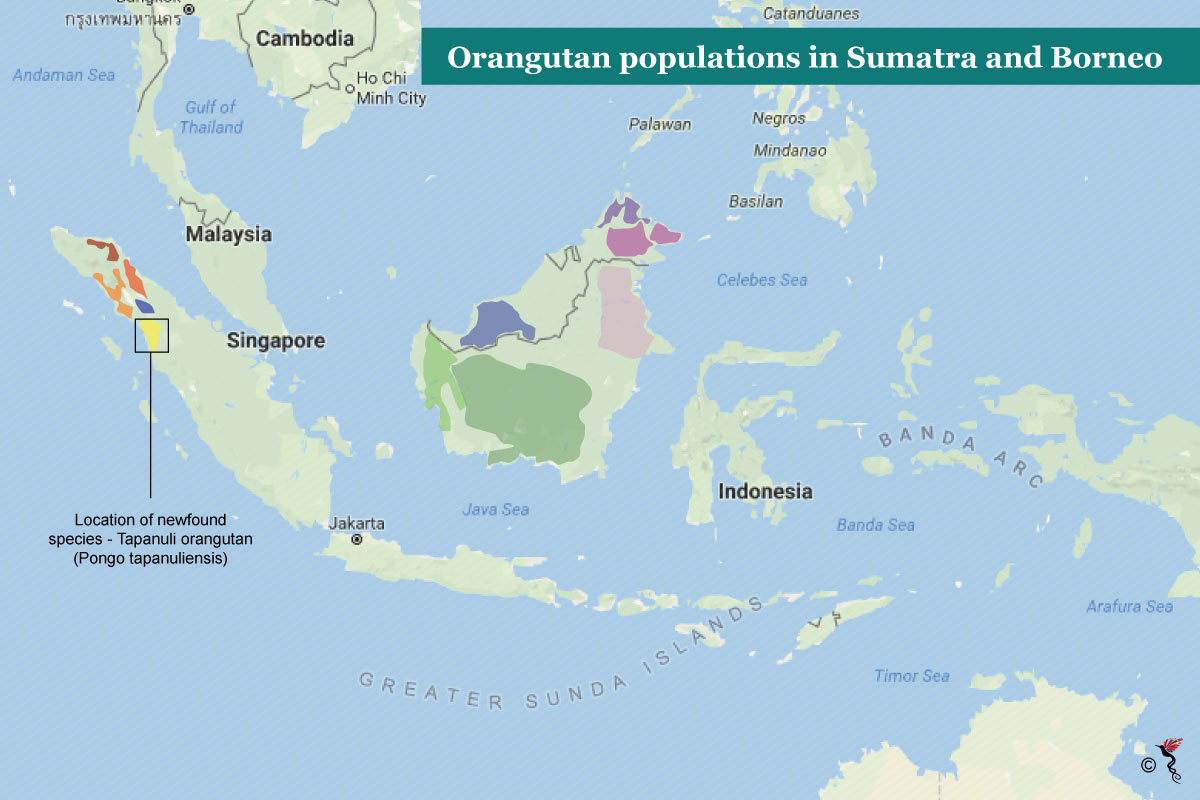The Tapanuli orangutan (Pongo tapanuliensis) that was officially announced by an international team of scientists early this month – is already an endangered species.
With 800 or fewer individuals, the Tapanuli orangutan is the rarest of all great apes. It is also the first new addition in almost a century to the small club of great apes, joining its fellow Sumatran and Borneo orangutans, gorillas, bonobos, chimpanzees and humans.
The newfound species of orangutan was described in the “Current Biology” journal. They were discovered in the region of Batang Toru, northern Sumatra with eminent features and behavioural characteristics compared to the Sumatran and Bornean orangutans.
The Batang Toru orangutans have a peculiar mix of features. Mature males have cheek flanges similar to those of Bornean orangutans, but their slender build is more alike to Sumatran orangutans.
The hair colour is more cinnamon and has a frizzier texture than the Bornean species, and they also make longer calls than other orangutans.

Orangutan populations in Sumatra and Borneo.
Road to discovery
According to World Wildlife Fund (WWF), the Tapanuli orangutan was first discovered in 1997 during an orangutan survey in the region. Over the next decade, the Sumatran Orangutan Conservation Programme (SOCP), together with other non-governmental organizations, universities, and Indonesian authorities, focused on learning more about the population.
By 2006, a research station was established to study the orangutans’ behaviour and genetics.
In 2013, there was a breakthrough when some researchers examined the skull of a male orangutan killed in a human-wildlife conflict. After comparison from other populations, the skull presented significant characteristics.
This discovery prompted the “largest genomic study of wild orangutans to date”. As a result, the data collected clearly identified three distinct evolutionary lineages among all orangutans.
The researchers also found that the Tapanuli population had become isolated from other Sumatran orangutan populations sometime in the last 10,000 to 20,000 years and that the orangutan’s lineage was ancient - between three and three and one-half million years old.
The sad truth
As much as this discovery is a celebration, it also acts as a call to action to protect the species.
Because like all orangutans, the Tapanuli is under serious threat of habitat loss.
Of the habitat itself, no more than 10 square km remains. Future development has been planned for that area, and about 15 percent of the orangutans’ habitat has non-protected forest status.
Other factors include human encroachment on forests from mining and possible plans for a hydroelectric dam which “could affect eight percent of the species’ remaining forest habitat”.
Said to be the largest hydropower project on Sumatra, the plant and its dam are part of a nationwide effort to step up energy generation in the face of an expected 9 percent increase in electricity demand per year.
The plant is projected to be complete by 2022, and will take up 645 hectares of land along a major river which includes an area with the highest known Batang Toru orangutan density.
In a press release, Greenpeace Indonesia Forest Campaigner, Ratri Kusumohartono said, “Unfortunately threats which include deforestation and fires mean that any new species discovered in Indonesia’s forests will struggle to survive. While Indonesian biodiversity keeps surprising us, so does the lack of real protection it gets from the government.”
Recommended stories: